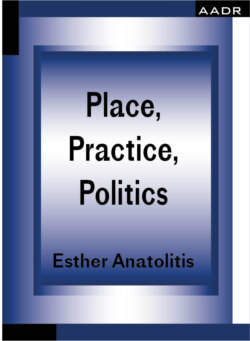Читать книгу Place, Practice, Politics - Esther Anatolitis - Страница 9
На сайте Литреса книга снята с продажи.
ОглавлениеStep 1: Survey the Scene was a workshop for site-specific practitioners interested in developing new approaches to highly regulated, highly programmed spaces. It was presented on Saturday 4 December 2010 as part of The South Project 2010 international gathering How can a network activate a public? and took place at West Space’s The West Wing in the Melbourne Central shopping centre. Participants were artists interested in extending their practice into the public space. Each chose a location, observed flows of gestures, movements and objects, analysed repeated movements, and returned to a discussion on how to hijack those flows as sites for distributed artworks.
What are your lines? What map are you in the process of making or arranging? What abstract line will you draw, and at what price, for yourself and for others? …For politics precedes being. Practice does not come after the placement of the terms and their relations, but actively participates in the drawing of the lines; it confronts the same dangers and the same variations that the placement does.
Deleuze and Guattari, A Thousand Plateaus
Melbourne Central is a retail and transport hub, a highly regulated space that accommodates the movements of tens of thousands of people each day.
Let’s catalogue the public activation potential of the South Project’s immediate environment: the commercial space outside of the West Wing.
With each individual embodying the flow of countless networks as they come and go, what opportunities exist for artistic intervention? How can a network activate a mass of individuals?
Our first step is to survey the scene.
With forensic care, let’s set upon the entire survey area with a range of tools and perspectives. Let’s observe repeated movements, and identify and record the elements that compose them – such that these elements can be understood as the activation points of a network. These are the system’s moving parts, and their distribution fabricates a public that has common interests, common tastes and moves in a common direction.
We will then return to the West Wing to analyse our findings as a group, determining the sets of conditions for STEP 2, in which projects of artistic co-option will hijack these distribution points and activate a public by engaging a community.
STEP 2: DEVELOP THE WORK
and
STEP 3: PRESENT THE WORK
Over to you.
